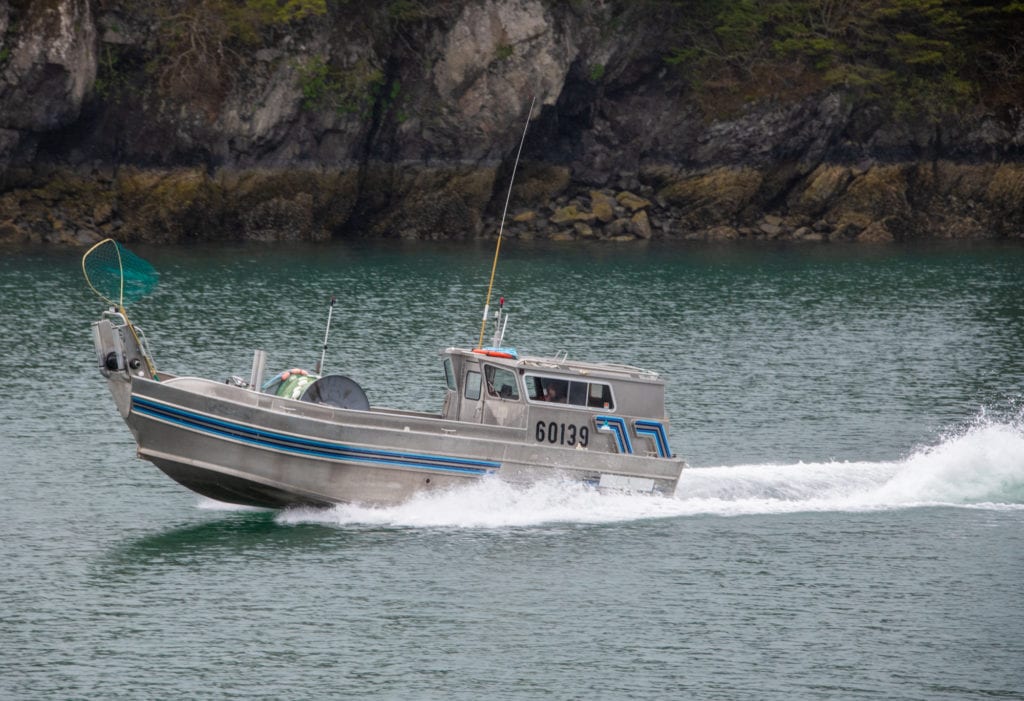
Commercial harvesters were granted another shot at the Copper River salmon, with a 12-hour opener on Thursday, July 16, in an effort to boost their estimated preliminary catch of sockeyes above the 94,631 counted to date.
By this time in July, Alaska Department of Fish and Game forecast was for 720,000 reds, plus 21,000 Chinooks, said Jeremy Botz, gillnet area management biologist in Cordova for ADF&G.
Why the harvest has been so low compared to the forecast remains an overall unknown, but a cumulative effect of ocean conditions has likely been a factor, Botz said.
Through Wednesday, July 15, the overall harvest for Prince William Sound stood at an estimated 3.6 million fish, including over 2 million pink and over 1 million chum, plus 602,126 reds, 6,778 Chinook and 508 coho salmon.
The sockeye catch to date has been below long-term averages in weight and length, Botz noted.
The sonar count for Prince William Sound is the 14th lowest on record for the years 1978 through 2020, and the cumulative commercial harvest this year is the fourth lowest harvest to date in the last 50 years.
Statewide the preliminary harvest through July 15 totals 40 million fish, including nearly 32 million sockeyes.
Fisheries economist Garrett Evridge of the McDowell Group noted in his latest weekly salmon harvest update on behalf of the Alaska Seafood Marketing Institute that the 2020 Alaska salmon season is improving.
“Last week’s harvest of 22 million salmon was double the entire harvest of the eight prior weeks,” Evridge said. “While optimism has increased, statewide production continues to lag comparable years with some areas well below normal harvest.”
Evridge noted that last week’s statewide harvest of 18.3 million sockeyes brought this season within 20 percent of the five-year average. Then incredibly productive fishing in Bristol Bay saw records fall across the region with many harvesters put on limits. Bristol Bay is still a third behind the strong 2019 season, slightly below the five-year average and slightly above the 10-year average.
Sockeye fishing has improved in Kodiak and the Alaska Peninsula & Aleutian Islands region, but remains slow in Cook Inlet, Southeast and Prince William Sound. Historically low escapement counts in Chignik have prevented any meaningful harvests there, Evridge said.
The pink salmon harvest of about 4.9 million fish is double the 2018 pace. Prince William Sound has contributed about 60 percent of the pink harvest, followed by the Alaska Peninsula & Aleutian Islands, with nearly all of the rest.
Year-to-date harvests of 2.8 million keta salmon ranks among the smallest in at least 15 years, down 60 percent from 2019 and the five-year average. The slow harvest is particularly disappointing to residents of the Arctic-Yukon-Kuskokwim region and Southeast due to the relative importance of the species to their annual harvest. The current week is typically the peak for keta salmon harvest, though strong fishing has increasingly happened through the end of August.
Coho volume typically trends higher in mid-July to an average weekly production level of about 200,000 to 400,000 fish through September.
Check the ADF&G statewide preliminary harvest report daily at adfg.alaska.gov/index.cfm?adfg=commercialbyfisherysalmon.bluesheet.





